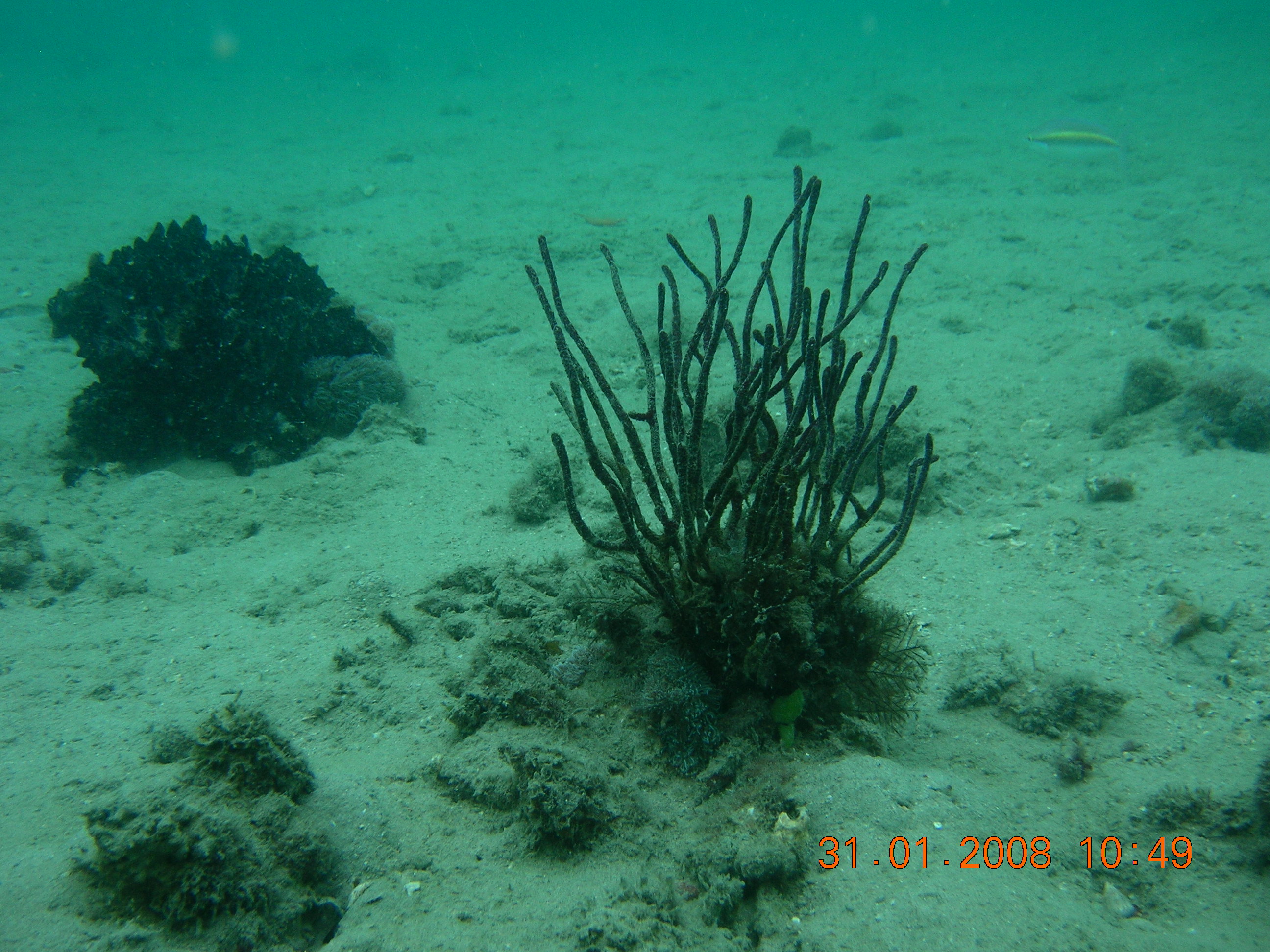|
|
Soft coral reefal gardens on unconsolidated substrateShort descriptionSubtidal soft coral reefal gardens on unconsolidated substrate in shallow and deep water. Disclaimer: Ecosystem type descriptions are based on biophysical attributes identified in Central Queensland through expert advice and supported by scientific literature. Not all ecosystem types are mapped based on current inventory, and many of the ecosystems described here may also occur in other parts of Queensland.
Classification categoriesSelect from the links below to view related ecosystem type categories Long descriptionSubtidal reefal gardens on unconsolidated or intermediate (coffee rock) substrate (shallower than 30 metres depth), typically dominated either by Alcyonarian soft corals and other octocorallians*, or taxa such as sponges, bryozoans, ascidians, hydrozoans or algae. While the short description characterises them as soft coral reefal gardens, equally these ecosystems could be sponge gardens, or dominated by other octocorallians depending on the dominant species present. They may occur as a subdominant of seagrass meadows at lower densities. Octocorallian is a subclass of the class Anthozoa in the phylum Cnidaria, and include soft corals, gorgonians, sea whips, sea pens, sea fans and octocorals. Like some of the many other anthozoans, Octocorallians are sessile polyp-bearing animals with a mobile larval phase. Octocorallians are distinguished by the eight (i.e. octo) tentacles in each polyp. Most octocorallians do not deposit a rigid calcium carbonate exoskeleton, and therefore tend to attach to reefs rather than contribute to reefal frameworks as per the reef building Scleractinian (hard) corals[4]. Alcyonarian soft corals will grow on the more persistent coffee rock substrates that are alternately covered over by sediments and exposed are more likely to have biota typical of reefal gardens. Sediment texture may be either gravels or unconsolidated substrates (e.g. coral rubble, duricrust fragments, pebbles etc.), gravelly sands or gravelly muds, with the gravel providing attachment surface for sea fans, sea whips and sponges. Gravel substrates may also be calcareous i.e. shellgrit. Coffee rock is a soft, dark-brown coloured friable rock consisting of sand grains weakly cemented together by organic matter (mostly plant-based). See type 25 for further information. Algae present may include erect calcareous algae e.g. Halimeda spp.. When these ecosystems occur close to the coastline, they often occur in high Energy magnitude areas experiencing tidal or current Energy source e.g. steep slope of channels experiencing rapid flushing (species list for Little Woody Island's sponge gardens available[3]). For more information on taxa of these ecosystems, see the Structural macrobiota attribute field. Where Sediment texture grades into sands, muddy sands or sandy muds, these ecosystems may become sparser and grade into subtidal seagrass dominated ecosystems, sandy or muddy ecosystems. Where coral rubble is colonised by hard corals, these ecosystems grade into non-branching hard coral ecosystems not on consolidated substrates. A typical Alcyonarian soft coral found in these gardens is from the genus Dendronepthya, which captures planktonic prey and lacks the endosymbiotic dinoflagellates (e.g. zooxanthellae) that live in corals and photosynthesise[5]. Similar ecosystems are known to occur on coffee rock reefs (i.e. intermediate consolidation, see type 101). Special valuesHigh species diversity, provide structure for mobile fauna, notably providing refuges for fish migration where these areas are surrounded by expanses of unconsolidated ecosystems. Diagnostic attributesInundation 'Subtidal' Consolidation 'Unconsolidated', 'Intermediate', 'Unknown' Structural macrobiota 'Soft coral – octocorallians' QualifiersAlthough unmapped, modified Naturalness of coffee rock reefs is relevant as anchoring on these substrates can damage the substrate and soft corals (see Jensen's video). They can also be subject to disturbances such as trawling. DistributionMay occur on subtidal coffee rock reefs (see type 101) often on the lee of large sand systems and extensive in southern Queensland from Fraser Island southward. Very little inventory exists for these ecosystems. See seagrass types 51, 50, 49, 53, 52, 45, 46, 47, 48. They can also occur on gravels see types 106 and 107. Dendronephthya australis soft coral gardens exist in Port Stephens, New South Wales[2] The following relates to distribution of this ecosystem type within the Central Queensland mapping area:
CommentsOther relevant attributes include Terrain morphology, Benthic depth (this type includes shallow and deep water less than 30 metres deep) and Terrain slope for example subtidal deep depressions (swales) and channels between ridges (dunes) are known to have high diversity biota resembling that of reefal gardens, found on shelly gravels off Rooney’s Point. Energy source and Energy magnitude are relevant as these deep reefal gardens experience high seabed stress (current stress) as evident in modelling[1][6]. Additional InformationSoft Corals of the Great Barrier Reef - eAtlas Tin Can Bay (Cooloola) marine biodiversity assessment: species list and 4K underwater video footage Classification - corals of the world References
Last updated: 19 July 2019 This page should be cited as: Department of Environment, Science and Innovation, Queensland (2019) Soft coral reefal gardens on unconsolidated substrate, WetlandInfo website, accessed 8 May 2025. Available at: https://wetlandinfo.des.qld.gov.au/wetlands/ecology/aquatic-ecosystems-natural/estuarine-marine/descriptions/98/ |

 — Department of the Environment, Tourism, Science and Innovation
— Department of the Environment, Tourism, Science and Innovation


